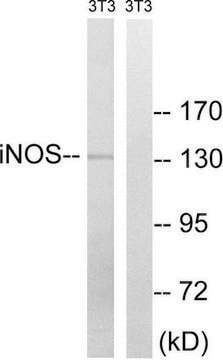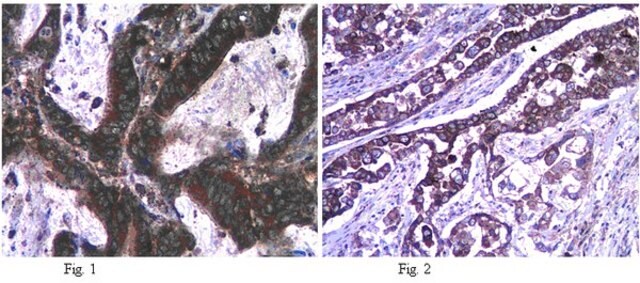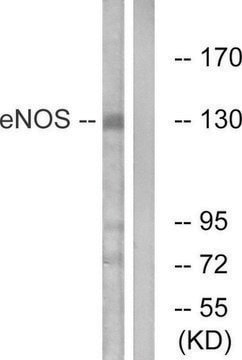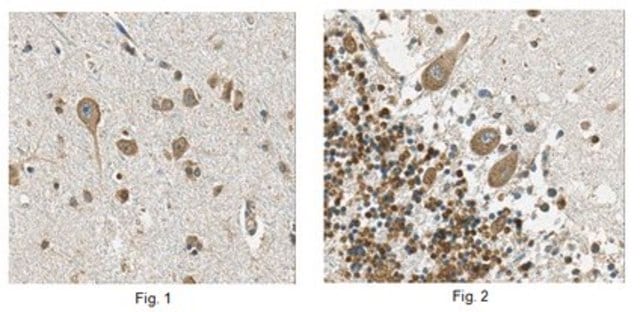SAB4200766
Anti-Nitric Oxide Synthase, Inducible antibody, Mouse monoclonal
clone NOS-IN, purified from hybridoma cell culture
Synonim(y):
Anti-Hepatocyte NOS (HEP-NOS), Anti-Inducible NOS (iNOS), Anti-NOS type II, Anti-Peptidyl-cysteine S-nitrosylase NOS2
About This Item
Polecane produkty
pochodzenie biologiczne
mouse
Poziom jakości
forma przeciwciała
purified from hybridoma cell culture
rodzaj przeciwciała
primary antibodies
klon
NOS-IN, monoclonal
Postać
buffered aqueous solution
masa cząsteczkowa
~130 kDa
reaktywność gatunkowa
human, mouse, rat, plant
stężenie
~1.0 mg/mL
metody
flow cytometry: suitable
immunoblotting: 2-4 μg/mL using mouse macrophage RAW 264.7 cell line activated with lipopolysaccharide (LPS) and interferon-γ
immunohistochemistry: 10-20 μg/mL using heat-retrieved formalin-fixed, paraffin-embedded human pancreas sections
izotyp
IgG1
numer dostępu UniProt
Warunki transportu
dry ice
temp. przechowywania
−20°C
docelowa modyfikacja potranslacyjna
unmodified
informacje o genach
mouse ... Nos2(18126)
Opis ogólny
Specyficzność
Immunogen
Zastosowanie
- immunoblotting
- immunofluorescence
- immunohistochemistry
- fluorescence-activated cell sorting (FACS)
Działania biochem./fizjol.
Postać fizyczna
Przechowywanie i stabilność
Oświadczenie o zrzeczeniu się odpowiedzialności
Not finding the right product?
Try our Narzędzie selektora produktów.
Kod klasy składowania
10 - Combustible liquids
Temperatura zapłonu (°F)
Not applicable
Temperatura zapłonu (°C)
Not applicable
Certyfikaty analizy (CoA)
Poszukaj Certyfikaty analizy (CoA), wpisując numer partii/serii produktów. Numery serii i partii można znaleźć na etykiecie produktu po słowach „seria” lub „partia”.
Masz już ten produkt?
Dokumenty związane z niedawno zakupionymi produktami zostały zamieszczone w Bibliotece dokumentów.
Nasz zespół naukowców ma doświadczenie we wszystkich obszarach badań, w tym w naukach przyrodniczych, materiałoznawstwie, syntezie chemicznej, chromatografii, analityce i wielu innych dziedzinach.
Skontaktuj się z zespołem ds. pomocy technicznej








